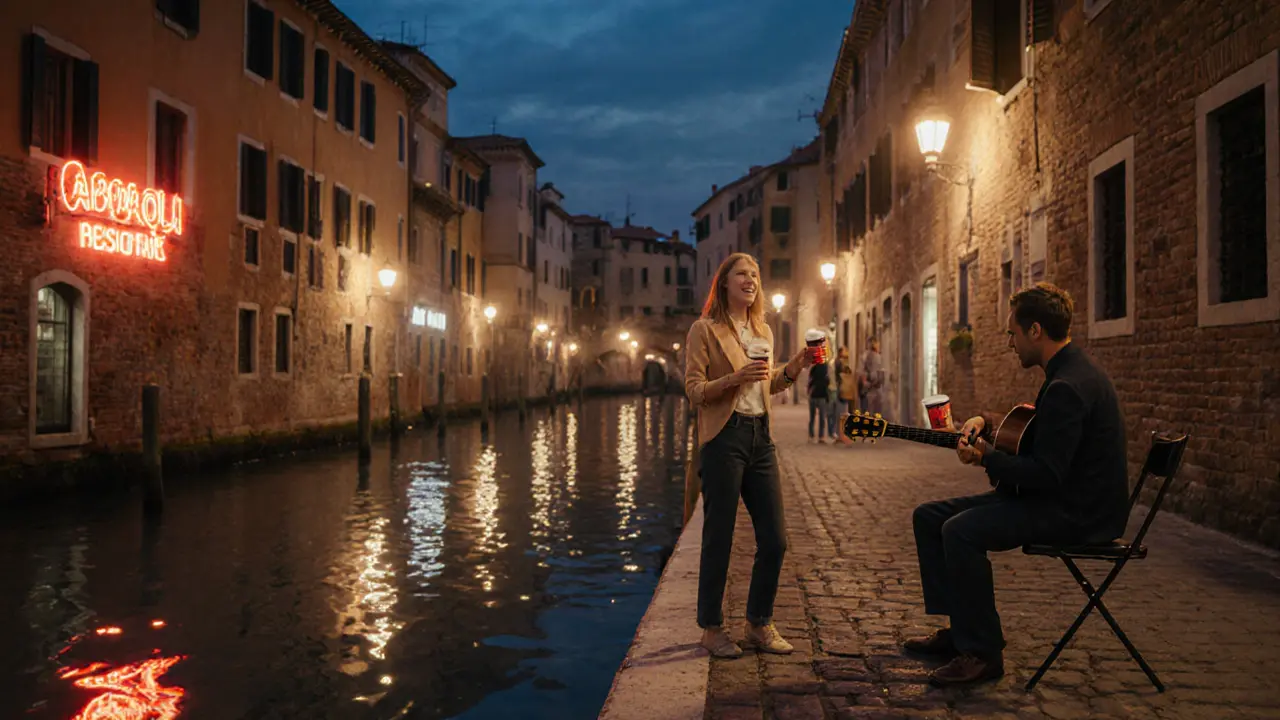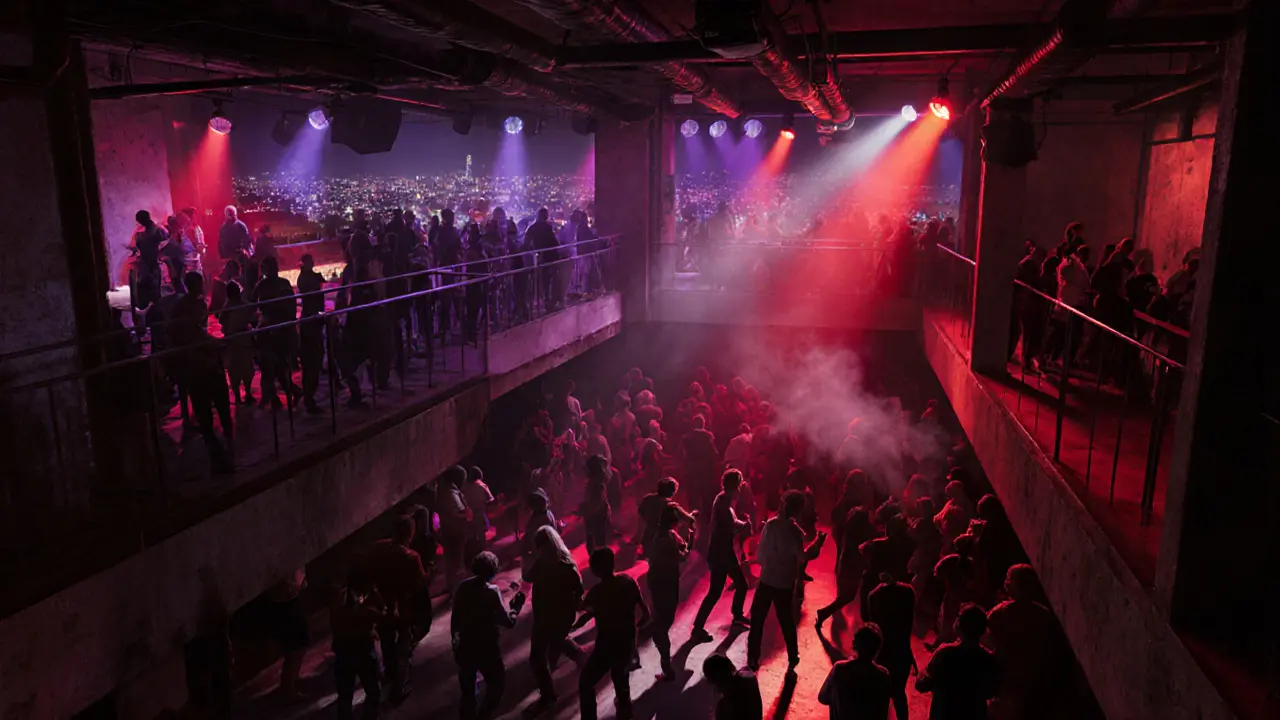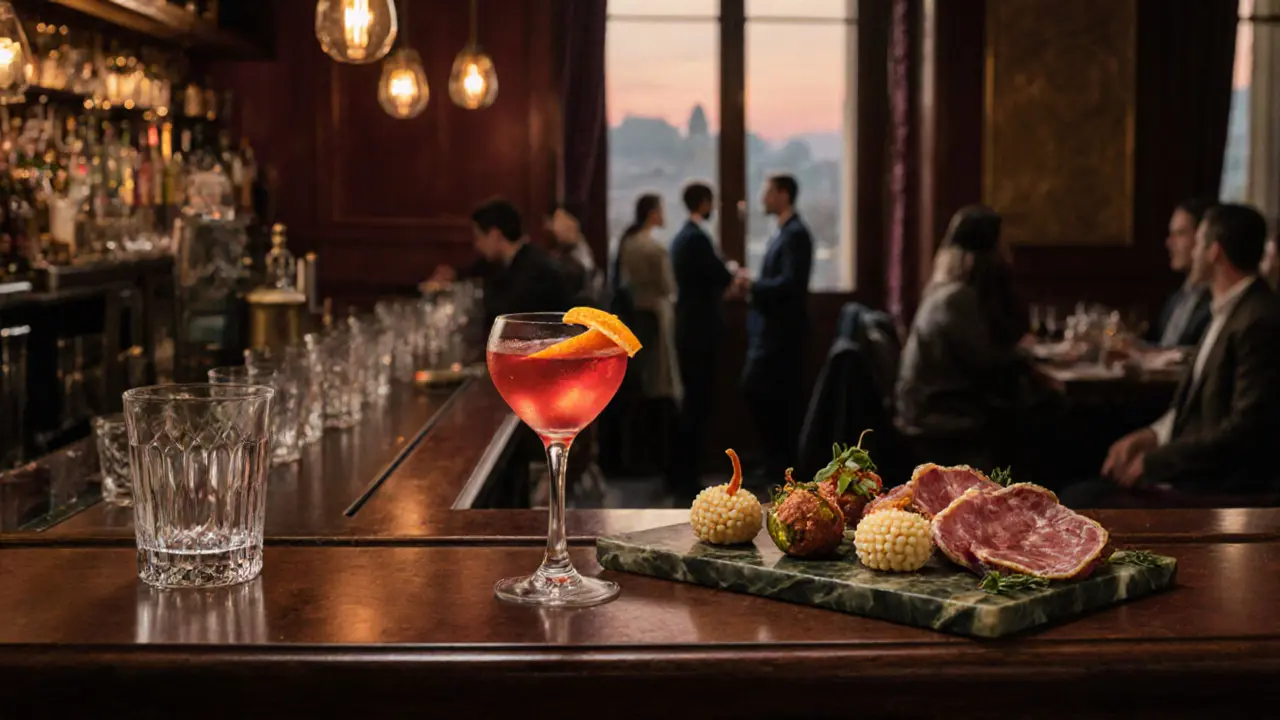
When the sun sets over Milan, the city doesn’t sleep-it switches modes. By 10 p.m., the quiet elegance of Brera turns into a buzzing mix of clinking glasses, live jazz, and laughter spilling out of hidden courtyards. This isn’t just a city that has nightlife; it’s a city that lives it. And if you think Milan’s nightlife is all about designer clubs and VIP tables, you’re missing half the story.
Where the Locals Go (Not the Tourists)
Forget the glossy brochures pushing you toward La Scala’s after-parties. The real Milan nightlife starts where the locals do: in Navigli. This canal-side district isn’t just pretty-it’s alive. On Fridays and Saturdays, the stretch between Piazza Ticinese and Via Tortona turns into a street party with no entrance fee. You’ll find students sipping Aperol spritzes from paper cups, artists playing acoustic sets on folding chairs, and old men arguing over football while sipping Campari. The bars here aren’t fancy, but they’re real. Try Bar del Fico for craft cocktails made with local herbs, or La Baita for cheap wine and a view of the water reflecting neon signs.The Club Scene: From Underground to Elite
Milan’s clubs don’t open until midnight, and they don’t close until sunrise. If you want to dance until the sun comes up, you’ve got options. For underground beats, head to Teatro degli Arcimboldi on Thursdays-it’s not a traditional club, but a converted theater that hosts experimental electronic sets from local DJs. It’s the kind of place where you’ll hear a 3 a.m. techno set mixed with field recordings of Milan’s tram system. If you’re looking for glamour, Armani/Silos throws exclusive after-hours parties during fashion week, but even outside that season, Magazzini Generali is your best bet. It’s a former warehouse turned into a multi-level club with industrial lighting, a rooftop terrace, and a sound system that shakes your ribs. The crowd? Mix of Milanese creatives, international models, and a few tourists who actually know what they’re doing.Where to Drink Like a Milanese
Milanese drinking culture isn’t about getting drunk. It’s about savoring. The aperitivo ritual is sacred. Between 6 and 9 p.m., most bars offer a drink (usually a spritz, negroni, or gin and tonic) with a buffet of snacks included in the price. It’s not just free chips-it’s hot pasta, stuffed vegetables, mini arancini, and sometimes even seafood. The best aperitivo spots? Bar Basso for the original Negroni Sbagliato, or Bar Campari for a quiet corner and perfect lighting. At Alchimia, they serve cocktails with edible flowers and hand-cut ice. You pay €18, but you leave full. Skip the tourist traps near Duomo. They charge €25 for a soda and a single croissant. The real deal is in the neighborhoods: Porta Venezia, Isola, and Lambrate. Each has its own vibe. Isola is where young professionals go after work-think rooftop bars with vinyl spins and craft beer taps. Lambrate is where the artists live-dive bars with mismatched furniture and live blues on Tuesdays.
Music, Art, and Late-Night Culture
Milan doesn’t just have clubs-it has late-night art. The Triennale di Milano stays open until 2 a.m. on Fridays, with curated exhibitions and DJs spinning in the galleries. It’s surreal: standing in front of a 1970s Italian avant-garde sculpture while a house beat pulses through the room. Spazio Oberdan does the same, turning design shows into after-hours parties with cocktails and live painting. If you’re into jazz, Blue Note Milano is the only place in Italy that regularly books international acts. No fancy dress code-just bring your ears. The room is small, the sound is perfect, and the crowd is silent except for the music. You’ll hear someone whisper, “That’s the same guy who played with Herbie Hancock.”What to Wear (And What Not To)
Milan doesn’t have a strict dress code, but it has standards. You won’t get in anywhere wearing flip-flops and a hoodie-not because it’s snobby, but because it’s out of place. Locals dress with intention. Think clean lines, dark colors, and one standout piece: a leather jacket, a silk scarf, or bold boots. Men wear button-downs without ties. Women wear tailored pants or midi dresses. You don’t need Gucci, but you do need to look like you care. The one exception? Navigli. Here, jeans and a T-shirt are fine. In fact, it’s expected. The vibe is relaxed. The rule of thumb: if you’re going to a club, dress like you’re going to a gallery opening. If you’re going to a bar by the canal, dress like you’re meeting a friend for coffee.
Getting Around After Dark
Milan’s metro shuts down at 1:30 a.m., but the city doesn’t. Night buses run every 20-30 minutes, labeled “N” (for Notturno). N1 goes from Porta Garibaldi to Navigli. N5 connects the city center to Lambrate. They’re safe, clean, and rarely crowded. Taxis are easy to find via apps like FreeNow or Beat-no need to flag one down. Uber doesn’t operate here, but local ride services are reliable. Walking is fine in the center after dark-Milan is one of the safest European cities at night. But avoid isolated alleys near Centrale Station after midnight. Stick to the main streets: Corso Como, Via Tortona, Via Monte Napoleone.When to Go and What to Avoid
The best nights for nightlife are Friday and Saturday. Thursday is surprisingly good if you want to avoid crowds. Sunday? Mostly quiet. Some bars stay open, but the energy’s gone. Avoid tourist-heavy areas like Piazza del Duomo after 10 p.m. The bars there are overpriced, the music is canned pop, and the staff act like you’re an inconvenience. Also skip the “Milan Night Tour” buses. They’re gimmicks. The real experience is finding your own spot.Final Tip: Stay Late, Stay Local
The magic of Milan’s nightlife isn’t in the big names-it’s in the moments you didn’t plan. The bartender who remembers your name after two visits. The stranger who invites you to join their table because they liked your shoes. The jazz trio that plays a cover of “My Way” at 3 a.m. and no one claps-they just listen. You don’t need a VIP list. You don’t need to know the bouncer. You just need to show up, be curious, and let the city guide you.Is Milan nightlife safe at night?
Yes, Milan is one of the safest major European cities after dark. The main areas like Navigli, Brera, and Isola are well-lit and patrolled. Stick to busy streets and avoid isolated alleys near train stations. Public transport runs reliably on night buses, and ride apps are widely used. Violent crime targeting tourists is extremely rare.
What’s the best time to start a night out in Milan?
Start around 8 p.m. with an aperitivo-this is when the real nightlife begins. Most bars fill up between 9 and 10 p.m. Clubs don’t get busy until midnight, and the real energy hits after 2 a.m. If you show up at 10 p.m. expecting to dance, you’ll be early. If you show up at 3 a.m., you’re right on time.
Do I need to buy tickets for Milan clubs?
Most clubs don’t require tickets on regular nights. Some, like Magazzini Generali or Armani/Silos during events, might charge €10-€20, but it’s not common. Smaller venues like Teatro degli Arcimboldi or Blue Note Milano usually don’t charge entry at all-just a drink minimum. Always check the venue’s Instagram page the day before. If there’s a headline DJ or special theme, they’ll post it.
Can I go out in Milan without speaking Italian?
Absolutely. Most bartenders and club staff in tourist areas speak English. But learning a few phrases helps-"Un aperitivo, per favore," "Grazie," and "Quanto costa?" go a long way. Locals appreciate the effort. In neighborhood bars outside the center, a little Italian gets you better service and maybe even a free snack.
Are there any free nightlife options in Milan?
Yes. Navigli is free to explore-no cover, no entry fee. Many bars offer free live music on weeknights, especially in Isola and Lambrate. The Triennale and Spazio Oberdan host free late-night events on Fridays. Walk along the canals, listen to street musicians, or grab a gelato from Gelateria della Musica and sit by the water. The best nights in Milan cost nothing.

Write a comment